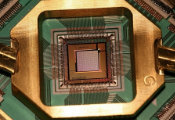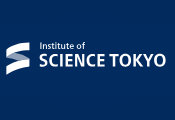Quantum Motion and Goldman Sachs Identify Quantum Applications in Financial Services Project
London, UK, October 30, 2024 -- Quantum Motion, a UK-based quantum computing scale-up founded by Professor John Morton, University College London (UCL), and Professor Simon Benjamin, University of Oxford, has worked alongside Goldman Sachs to research how quantum computers can be used in financial services to perform complex calculations, such as options pricing. The research, which explored how intricate multi-qubit operations can be applied within pricing algorithms, is now undergoing peer-review and has been published on the arXiv, an open-access archive of scientific research papers.
Options pricing is based on variable market dynamics, volatility and time-sensitivity, which makes it incredibly complex and risky. Traditional computers struggle to price options accurately when processing large amounts of data quickly or exploring a large number of possible scenarios, which is where quantum computers could have a benefit. Goldman Sachs worked with Quantum Motion to develop an efficient algorithm, including researching the necessary software and hardware capabilities, to enable quantum computations fast enough to have a real advantage in this area.
Simon Benjamin, CSO of Quantum Motion, said: “People often don’t realise that even though quantum computers may sound like magic, in reality it’s not enough to have just any machine. To have real impact in sectors such as finance and pharmaceuticals, which involve exploring a huge space of possibilities, and demand accuracy, quantum computers need to have a large number of qubits available at once, and all of them capable of fast operations.”
Speed and accuracy of calculations depend on quantum computers having large numbers of qubits. Many quantum hardware architectures have only a modest number of qubits available at any one time. This limitation means quantum software engineers must optimise their algorithms to run on smaller numbers of qubits at once which results in slower computations overall. However, for many applications where quantum computing can have impact, these algorithms need to run quicker to deliver full advantage to end users.
Quantum Motion presented a method in which the complex algorithms at the heart of quantum software – called oracles – can be broken down into many small tasks that run simultaneously. This increases the number of qubits that need to be operating in parallel, but correspondingly reduces the time required to run the algorithm. The improvement in runtime can be vital for applications – such as those in financial services – where the time, usually in the scale of seconds, is critical for delivering quantum advantage.
The technique devised by Quantum Motion will be relevant to many other applications, including those in chemistry and materials science. In particular, the paper explored how the technique can be used to approximate a Coulomb potential – a mathematical expression that describes the electrostatic interaction between charged particles in a system, such as electrons and protons. Algorithms need this information when discovering new processes in chemistry and materials science.
The paper – titled “Low Depth Phase Oracle Using a Parallel Piecewise Circuit” – also examined how the technique could help fast-track quantum hardware development, such as double quantum dot potential, which was explored using classical techniques for the development of semiconductor-based quantum computers. This method could enable new predictive modelling capabilities using quantum computing to give rapid feedback on the performance of candidate quantum hardware designs. In this way, one day quantum computers could be used to design – among other things – better quantum computers.
“The strategy at Quantum Motion is to deliver a scalable, integrated quantum architecture capable of building systems of sizes yielding real value. The components of our quantum chips are at the same minute scale as conventional transistors, which gives the potential for vast numbers of qubits on a single chip,” said James Palles-Dimmock, CEO of Quantum Motion. “Working alongside end-users, such as Goldman Sachs, enables our researchers to understand the quantum hardware requirements, often stretching to many millions of physical qubits, that are needed to run quantum algorithms that can deliver transformative impact for business.”




































